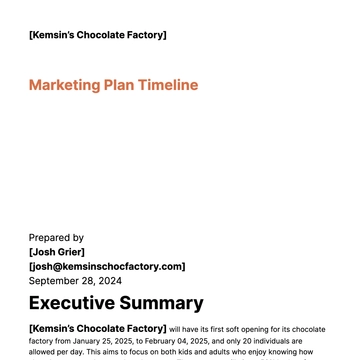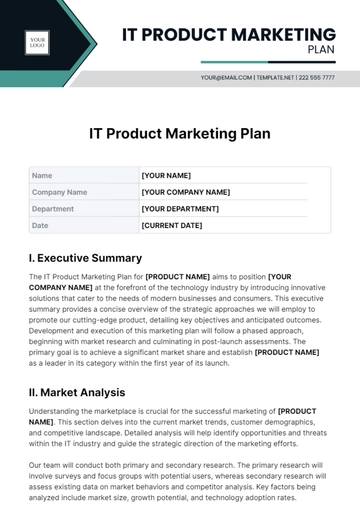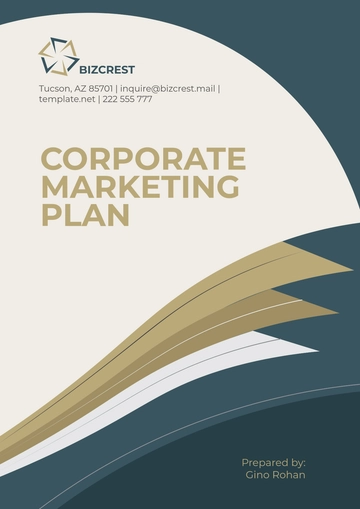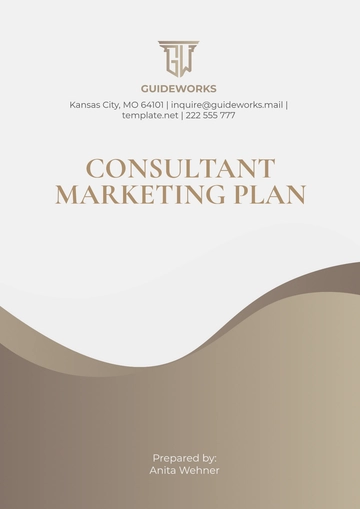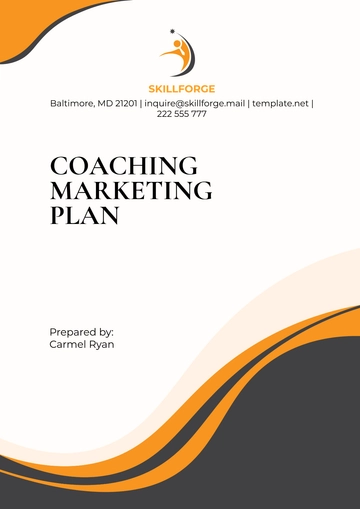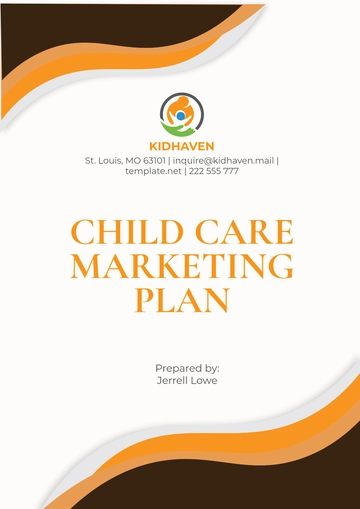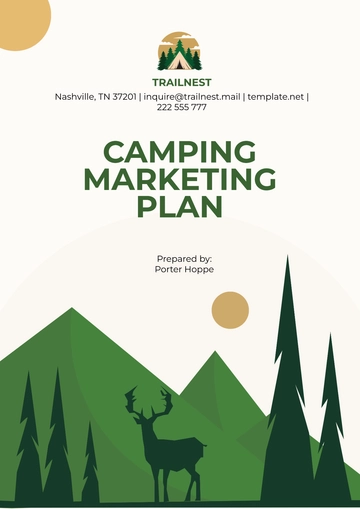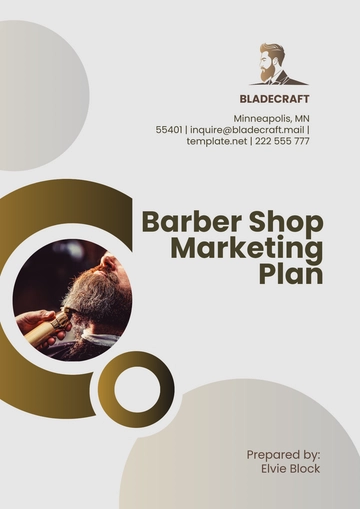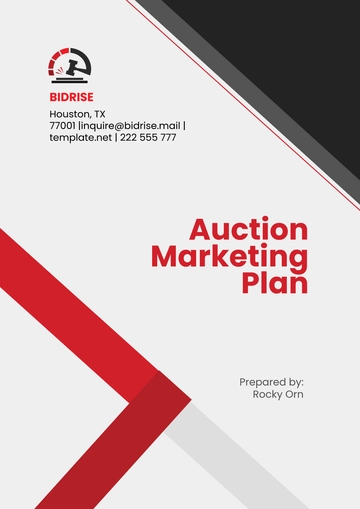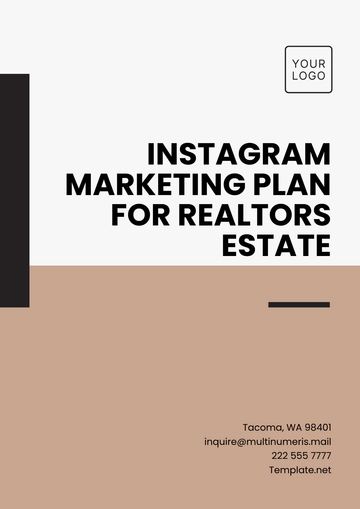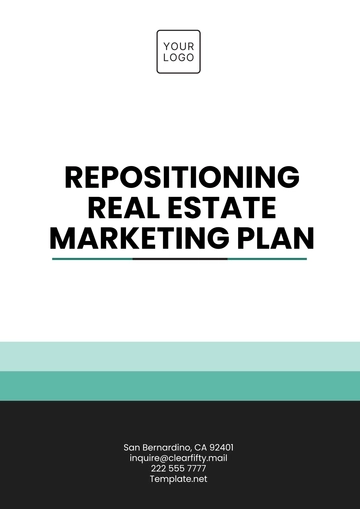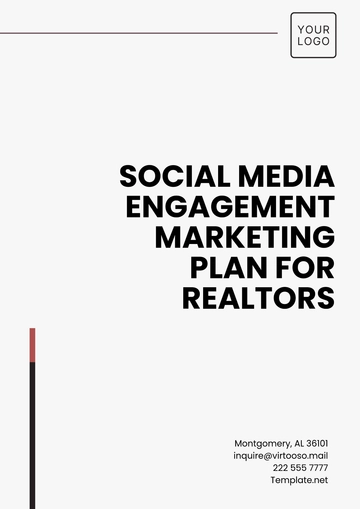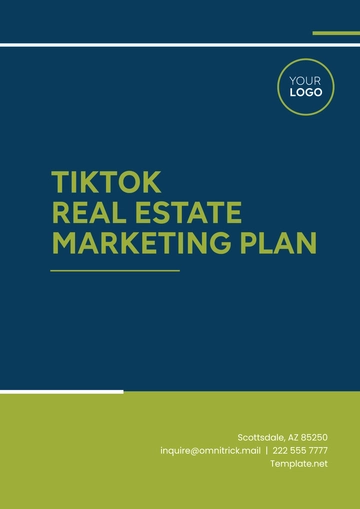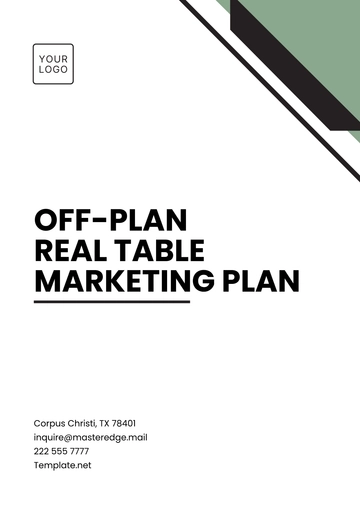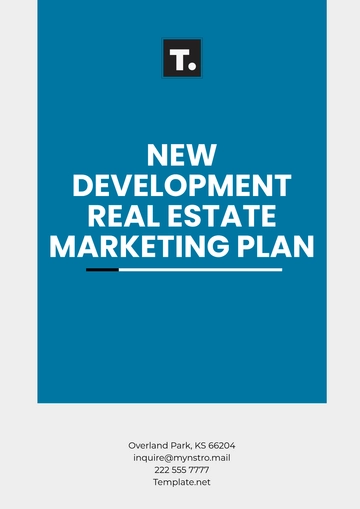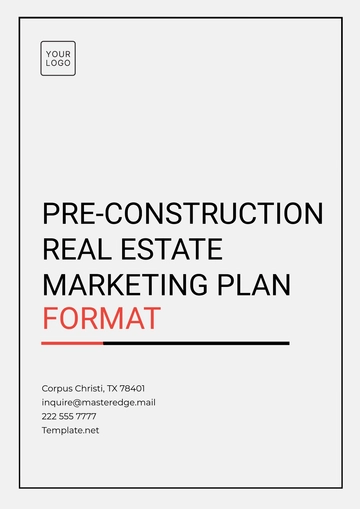Free Quarterly Marketing Plan
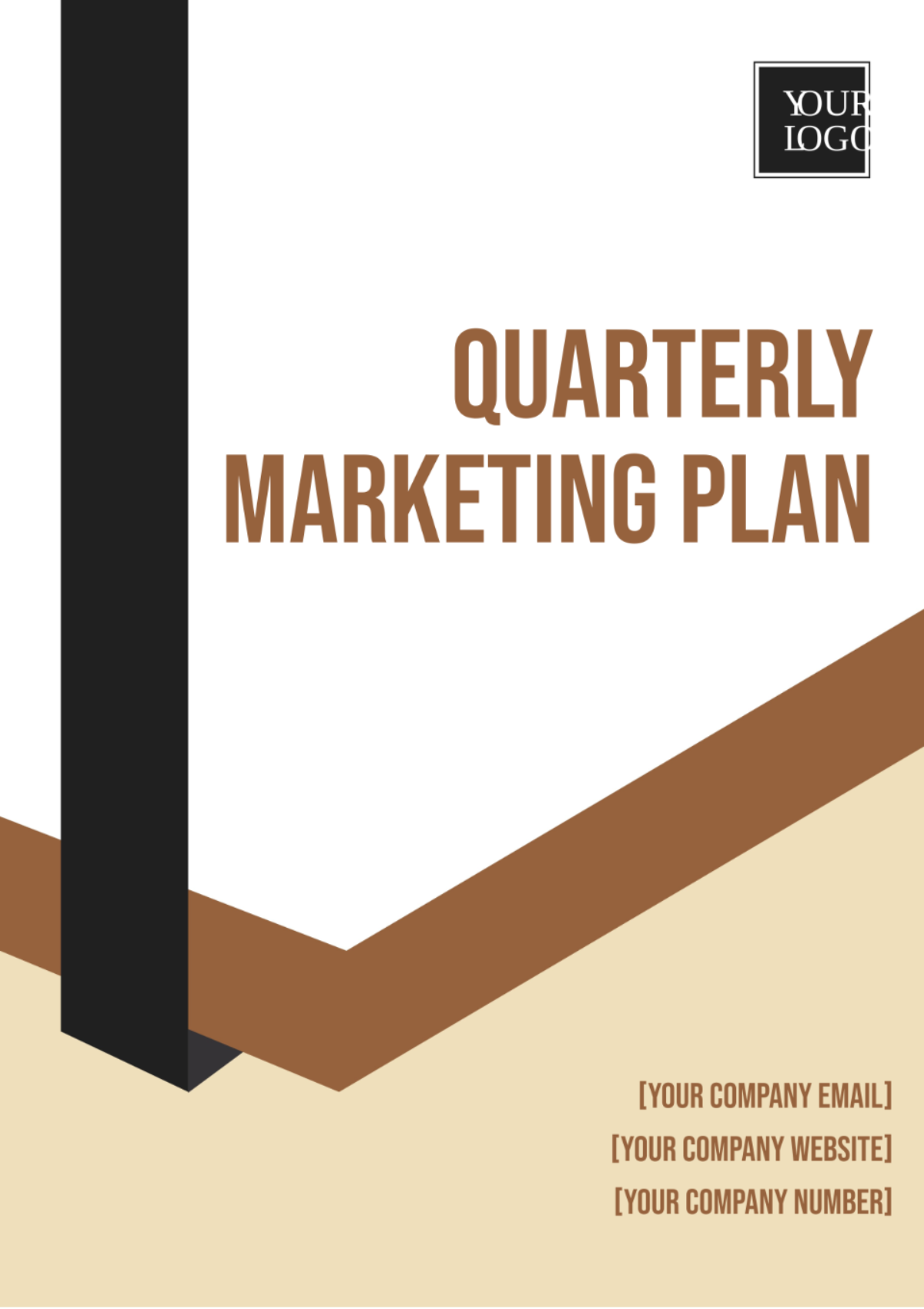
Prepared by: [YOUR NAME]
Company: [YOUR COMPANY NAME]
I. Executive Summary
In the previous quarter, [YOUR COMPANY NAME] successfully launched a new product line, resulting in a 20% increase in revenue.
Building on this momentum, the focus for the forthcoming quarter is to increase overall brand awareness by 25%, enhance online engagement by 40%, and boost sales leads by 30%.
These goals align with the company's broader strategic objectives of expanding market share and enhancing customer loyalty.
II. Situation Analysis
SWOT Analysis:
Strengths: Strong brand reputation, innovative product offerings, and a loyal customer base.
Weaknesses: Limited digital presence and reliance on traditional marketing channels.
Opportunities: Growing demand for eco-friendly products, emerging markets, and advancements in digital marketing technologies.
Threats: Intense competition, economic uncertainties, and changing consumer preferences.
Competitor Analysis:
Key Competitors:
[Competitor A]: A market leader with a 40% market share, known for innovative products and strong brand loyalty.
[Competitor B]: An emerging player with a focus on sustainability, gaining traction among environmentally conscious consumers.
[Competitor C]: Established brand with a diverse product portfolio, targeting a wide range of demographics.
Competitor Strategies:
[Competitor A]: Invests heavily in digital marketing, leveraging influencer partnerships and interactive campaigns.
[Competitor B]: Emphasizes eco-friendly packaging and transparent sourcing, appealing to environmentally conscious consumers.
[Competitor C]: Focuses on product diversification and strategic pricing to maintain market share.
Strengths and Weaknesses:
[Competitor A]: Strengths include strong brand recognition and a wide distribution network. Weaknesses include limited product innovation.
[Competitor B]: Strengths include a unique value proposition and a loyal customer base. Weaknesses include a limited marketing budget.
[Competitor C]: Strengths include a diverse product range and established customer trust. Weaknesses include limited digital presence.
Market Analysis:
Market Trends:
Increasing demand for sustainable products, driven by growing environmental concerns.
Shift towards online shopping and digital engagement, accelerated by the COVID-19 pandemic.
Emphasis on convenience and personalization, shaping consumer preferences and buying behavior.
Customer Preferences:
Customers value authenticity, seeking brands that align with their values and beliefs.
Product quality and performance are key drivers of purchase decisions, especially among discerning consumers.
Social media and online reviews play a significant role in shaping brand perception and purchase intent.
Market Size and Growth Potential:
The market for eco-friendly products is estimated to be worth $100 billion and is projected to grow at a CAGR of 10% over the next five years.
Online retail is expected to account for 25% of total retail sales by [Year], presenting significant growth opportunities for digital marketing.
III. Marketing Goals and Objectives
Increase overall brand awareness by 25% through targeted digital marketing campaigns and social media engagement.
Enhance online engagement by 40% through interactive content, live events, and community-building initiatives.
Boost sales leads by 30% through targeted email campaigns, lead-generation activities, and promotional offers.
IV. Target Audience
Demographics: Tech-savvy millennials aged 21-35, primarily urban dwellers with disposable income.
Psychographics: Value sustainability, innovation, and convenience. Active on social media and receptive to digital marketing.
V. Marketing Strategies and Tactics
Digital Marketing:
Utilize social media platforms such as Instagram and Facebook to showcase product features, customer testimonials, and behind-the-scenes content.
Implement targeted advertising campaigns to reach new audiences and retarget existing customers.
Content Marketing:
Develop a series of blog posts focusing on sustainability, technology trends, and product benefits.
Create downloadable whitepapers and case studies highlighting the effectiveness of [YOUR COMPANY NAME]'s solutions.
Email Campaigns:
Segment email lists based on customer preferences and purchase history.
Send personalized newsletters with product updates, special offers, and tips for sustainable living.
VI. Budget Allocation
Digital Advertising: $10,000
Content Creation: $5,000
Event Sponsorship: $3,000
Other Promotional Activities: $2,000
Total Budget: $20,000
VII. Evaluation and Monitoring
Key Performance Indicators (KPIs):
Website Traffic
Social Media Engagement
Email Open and Click-through Rates
Lead Generation Metrics
Metrics will be tracked weekly, with a comprehensive review at the end of each month to assess progress and make adjustments as needed.
VIII. Timeline and Milestones
Week 1-2: Launch digital advertising campaigns.
Week 3-4: Publish the first set of blog posts and initiate email campaigns.
Week 5-6: Host live events and engage with the audience on social media.
Week 7-8: Analyze performance data and adjust strategies.
Week 9-12: Continue campaigns and prepare for next quarter.
IX. Summary and Next Steps
Summary of Achievements:
Successfully increased brand awareness by 20% through targeted digital campaigns and social media engagement.
Exceeded online engagement targets by 50% through interactive content and community-building initiatives.
Achieved a 25% increase in sales leads through targeted email campaigns and lead generation activities.
Lessons Learned:
The importance of customer segmentation and personalized marketing approaches.
The effectiveness of leveraging social media influencers to reach new audiences.
The a need to continuously monitor and adjust strategies based on performance data.
Next Steps:
Expand digital advertising efforts to new markets and demographics.
Enhance content marketing strategies with more interactive and engaging content.
Further, optimize email campaigns for better targeting and conversion rates.
- 100% Customizable, free editor
- Access 1 Million+ Templates, photo’s & graphics
- Download or share as a template
- Click and replace photos, graphics, text, backgrounds
- Resize, crop, AI write & more
- Access advanced editor
Achieve marketing success with the Quarterly Marketing Plan Template from Template.net. This customizable, downloadable, and printable template provides a comprehensive framework for planning your quarterly marketing strategies. With editable features in our AI Editor Tool, tailor the plan to your specific needs. Streamline your marketing efforts and achieve better results with this invaluable resource.

